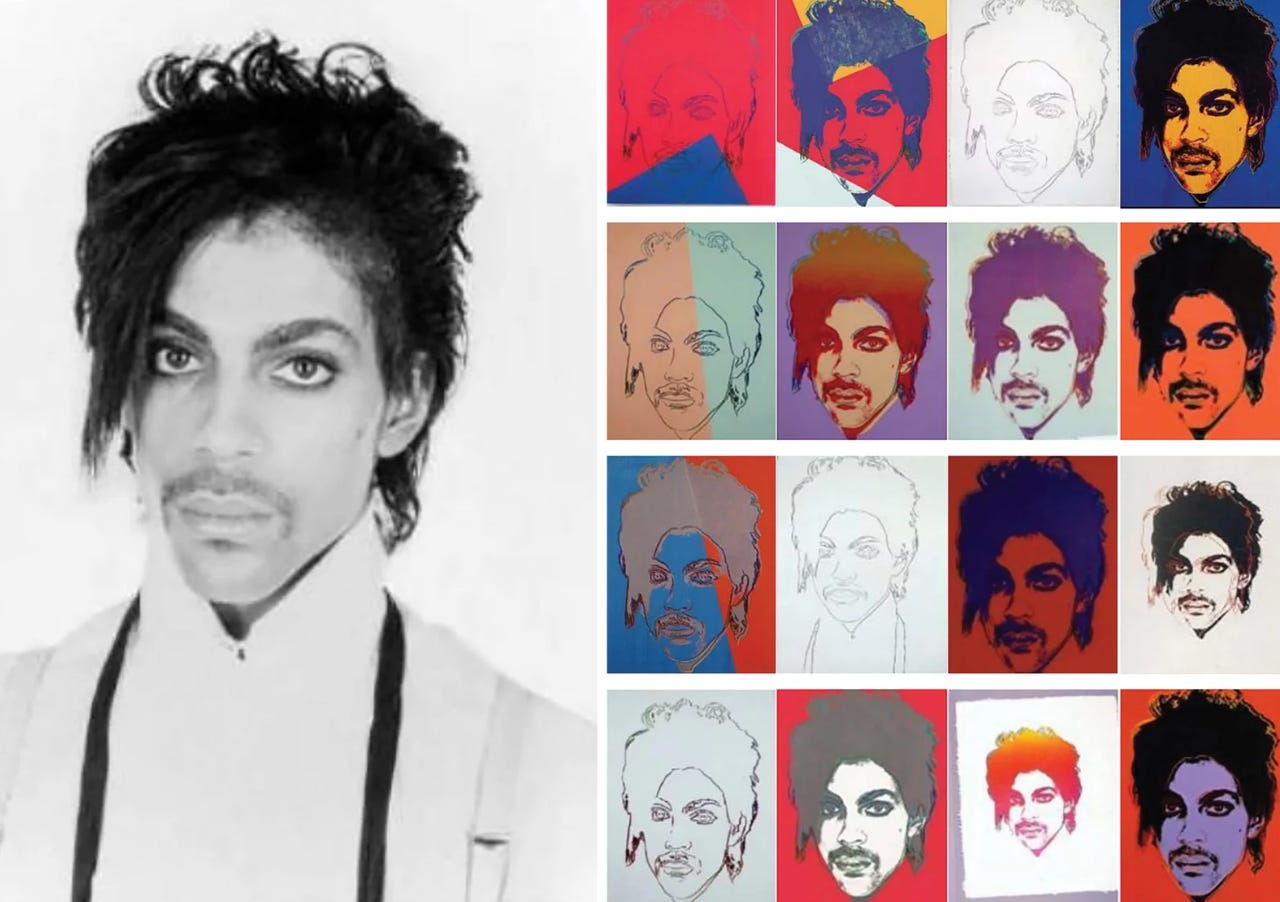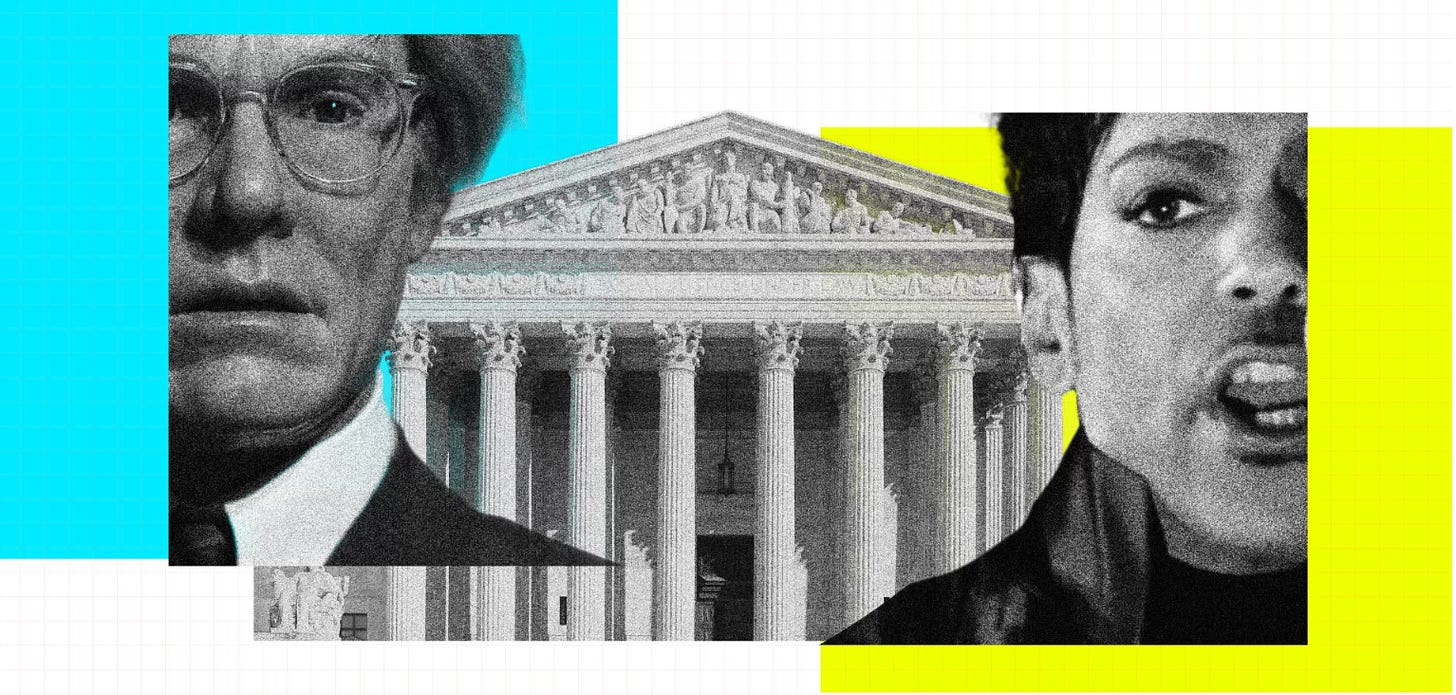The Supreme Court Just Became Hollywood’s New BFF In Its AI Fight
Narrowing the “Fair Use” Defense to Copyright May Become Critical to Protecting Artists’ Livelihoods as AI Scrapes Their Creative Works
Last week’s bombshell U.S. Supreme Court ruling in the Andy Warhol “fair use” infringement case represents a human shot across the AI bow, even if AI wasn’t mentioned.
Warhol’s Prince Series of works, based on a copyrighted photograph, was found to be infringing for its specific unlicensed use by Condé Nast. The court’s 7-2 decision, and in particular its rationale for narrowing immunity for a purported infringing work’s “transformative” nature, gives artists - particularly visual artists but potentially others as well - a powerful new argument in their battle against the coming generative AI storm that threatens their commercial livelihoods. Historically, a finding of “transformative” use has been the single most critical factor in copyright fair use analyses to excuse purported infringement.
Generative AI is able to create novel, if not entirely new, works only by first training on massive amounts of Internet data, much of which is copyrighted. Instructional prompts then elicit artificial creations. For example, this article is copyrighted when it sees the light of day, yet inevitably will be scraped by an AI to spit out future works. The amount of my contribution to those AI-generated works most likely would be small, by volume at least. AI company lawyers would argue that AI had “transformed” it (together with the copyrighted works of countless others), and that typically would end the fair use analysis.
But the Supreme Court’s Warhol ruling upends that state of affairs, with potentially far-reaching ramifications in the world of AI and the creative arts. Imagine cases where the AI outputs are not so separated from the data inputs as they are in my example above. Case in point Getty Images, which is currently litigating a major case against AI visual art generator Stability AI. Getty argues that Stability AI illegally trains its AI on Getty’s copyrighted photographs to directly compete with Getty and steal licensing opportunities that otherwise would have come its way.
Even more directly, AI that generates visual works “in the style of” specific artists certainly competes with them in some manner, even if those AI generated works are “transformative.”

In the Warhol case, everyone, including Justice Sonia Sotomayor writing for the majority, conceded that Warhol’s re-imagination of the Prince photograph in his inimitable style was “transformative.” But that wasn’t enough to find fair use, even though the Court noted that Warhol’s transformation changed the photograph’s overall meaning and impact, usually decisive factors.
Instead, the Court focused squarely on the impact of Warhol’s work on the photographer’s livelihood. It was enough that Warhol’s work competed directly with the photographer’s for the coveted commercial opportunity - in this case, a commemorative magazine celebrating Prince’s life in 2016 - and no license had been sought. And, in the words of the Court, “Such licenses, for photographs or derivatives of them, are how photographers like [plaintiff Lynn] Goldsmith make a living.”
Take that, Stability AI! Getty Images’ lawyers couldn’t have written that sentence better themselves.
But the Court’s analysis didn’t end there. Justice Sotomayor gave several examples from across the world of entertainment to illustrate the majority’s point. A commercial remix of Prince’s ”Purple Rain” isn’t a fair use “just because the remix added new expression or had a different aesthetic,” it said. “A film or musical adaptation … might win awards for its ‘significant creative contribution’ … and add ‘important new expression’ … [b]ut that does not in itself dispense with the need for licensing,” it added.
The RIAA immediately applauded the ruling, hitting its implications for generative AI head-on. “We hope those who have relied on distorted - and now discredited - claims of ‘transformative use,’ such as those who use copyrighted work to train artificial intelligence systems without authorization, will revisit their practices in light of this important ruling.” For its part, the MPA, which previously had stayed neutral on the case when it filed an educational amicus brief to the Court, said it “applaud[ed]” the ruling without specifically mentioning AI.
Just like it did to two of the most liberal members of the Court, the Warhol decision will undoubtedly divide the creative community. Many will praise Justice Sotomayor’s majority opinion for protecting creators, but others will agree with Justice Elena Kagan’s scathing dissent and deride it for chilling their art. The two Justices - who are almost always allies - threw surprisingly pointed barbs at each other.
But one thing is absolutely clear. Commercial opportunities and incentives are at the core of the Court’s ruling. And that bodes well for artists and creators as they battle generative AI’s flooding of the market with competitive works that, yes, may be “transformative,” but still may be found to be infringing, unfair uses.
“Payments like these are incentives for artists to create original works in the first place,” the Court wrote. And that intersection of commerce and creativity is where the fight over AI will continue to play out for years to come. In that fight, human artists just got a powerful new ally.
NOTE: I am an intellectual property and entertainment attorney by trade and have been involved in numerous copyright cases and infringement battles. My analysis above is based on my own reading of the full Supreme Court opinion. Reach out to me at peter@creativemedia.biz if you’d like to discuss these issues or are interested in exploring a potential legal or business relationship with me and my media, entertainment and tech-focused firm Creative Media.




